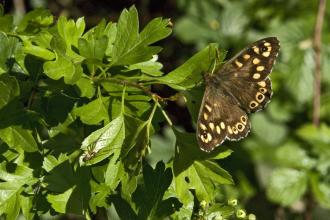Autumn wildlife
Autumn is a time of hunting for conkers, kicking through fallen leaves, roasting chestnuts and roaring bonfires. The woodlands are transforming; the once green leaves taking on fiery shades; bursts of red and purple berries and shiny brown acorns and nuts tempting thrushes and squirrels.
Winter is around the corner, so everyone is making the most of the last warm days, and what better place to do that than in one of our wonderful woods?
Summer’s lush green woodlands turn into a riot of golden yellows, blazing oranges and deep sunset reds as the days get colder.
What to look out for
In the woods the red deer are bellowing in their annual rut; jays are screeching back and forth, hoarding acorns for the winter to come; busy flocks of tits tumble through the canopy, always hungry, always moving; the ivy flowers are a-buzz with hoverflies, wasps, honey bees, and the last red admiral of the season. Autumn woods are wonderful places, just be prepared for an adventure...
Autumn woodland factfile
Why do leaves change colour?
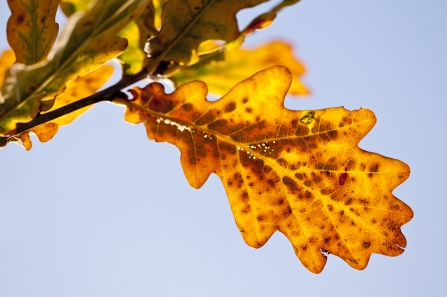
Ross Hoddinott/2020VISION
Shorter days and cooler nights trigger seismic changes in leaves during autumn, creating spectacular seasonal displays. As the days become shorter, the production of green chlorophyll begins to stop. Existing chlorophyll breaks down and the green colour fades. Yellow and orange 'carotenes' that you can’t normally see become visible, making the leaf change colour.
A layer of cork-like cells also form across the base of leaf stalks. Sugars then become trapped and concentrated in the leaves and are converted to 'anthocyanins', making them appear red, purple or pink.
Weather conditions can also have an effect on leaf colour. Sunny dry days and cold (but not freezing) nights create the best autumn colours.
Why do conker tree leaves go brown first?
Come late summer, horse chestnut trees can look quite sorry for themselves. This has nothing to do with the changing of the seasons, but is actually down to a leaf-eating insect.
The horse chestnut leaf-mining moth was first identified in Wimbledon in 2002 and has since spread rapidly across England. The moth larva feed inside the leaves, causing brown or white blotch mines to develop between the leaf veins. Heavily infested trees will drop their leaves early.
Although it looks unattractive, research has show that the insects have almost no effect on the growth rate or health of the trees.
Conker or chestnut?
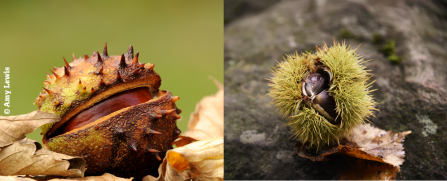
While horse chestnuts (conkers) and sweet chestnuts might look similar (both have a green spiky shell and a brown nut), they are in fact very different. Whilst sweet chestnuts are delicious when roasted, bitter conkers contain aescin and are mildly poisonous, so you don't want to eat them.
How to tell horse chestnuts and sweet chestnuts apart
Sweet chestnuts are often found two or more to a shell which has many extremely sharp long densely clustered burrs (spikes). Conkers are rarely found more than two to a shell, which can have widely spaced short spikes or be completely smooth.
Tree ID
Sweet chestnut trees have single toothed leaves, whereas horse chestnuts have a compound leaf with six or seven leaflets. Sweet chestnuts also have multiple spikes of yellowish white flowers in spring, whilst conker trees have single upright spikes of attractive blooms.
Autumn fungi
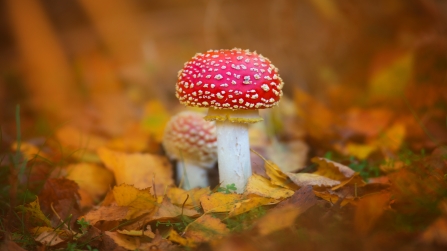
Jon Hawkins - Surrey Hills Photography
From the strangely named bracket fungus, chicken of the woods, to the classic fairy toadstool, fly agaric; our woodlands are home to a huge variety of fungi species.
Neither plant nor animal, the 15,000 fungi species in the UK make up an entire kingdom of their own. Some are delicious, whilst others are poisonous and every habitat is home to this adaptive organism. NEVER eat a fungi unless you are with an expert.
Fungi and trees
The fruiting body that we see above ground is only one small part of a fungi. Underground hides mycelium, a vegetative mass made up of hundreds or even thousands of fine threads that can spread over long distances. In fact, a honey fungus species with a mycelium network measuring 2.4 miles across in the Blue Mountains in Oregon is thought to be the largest living organism on Earth!
Many fungi species have a symbiotic relationship with plants and trees. Fungi mycelium can capture water and nutrients that are out of reach of plants and trees, bringing them close to their roots. The roots take water and nutrients from the fungi and in return give sugars made during photosynthesis.
Our top woodland reserves
Autumn spotter guides
Download our autumn spotter guides below and make a fun, family trail from your autumn woodland walk.

Download our Awesome Autumn Trail
This trail is designed to be printed at home, and folds down to a handy pocket-size. It's packed full of games and ideas which you can take with you anywhere, whether it's at the local park, in the garden or on one of our woodland reserves.
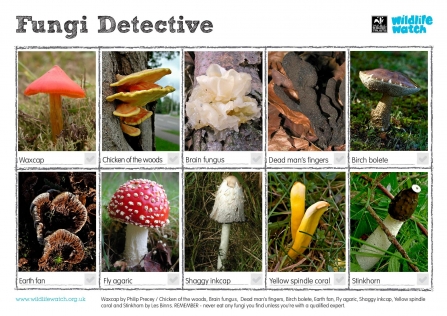
Download our Fungi Detective Spotter Guide
Mushrooms are the only part of a fungus we usually get to see. Look for them in damp areas around trees where the rest of the fungus is feeding on underground roots or rotting wood.
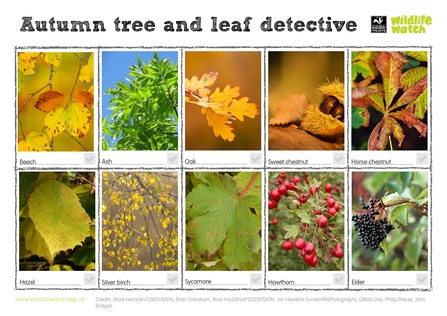
Download our Autumn Trees Spotter Guide
Can you tell your conker from your horse chestnut? Do you know which tree those fallen leaves have come from? Use this spotter guide to sort out which tree is which.
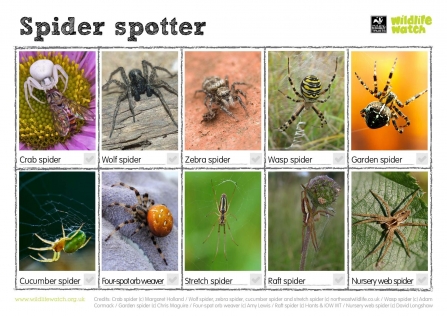
Download your Spider Spotter Guide
Autumn is a great time to look out for everyone's favourite creepy crawlies (ok, maybe not everyone's) - spiders. Look for dewy and frosty webs or hiding spiders tucked away in nooks and crannies.






